
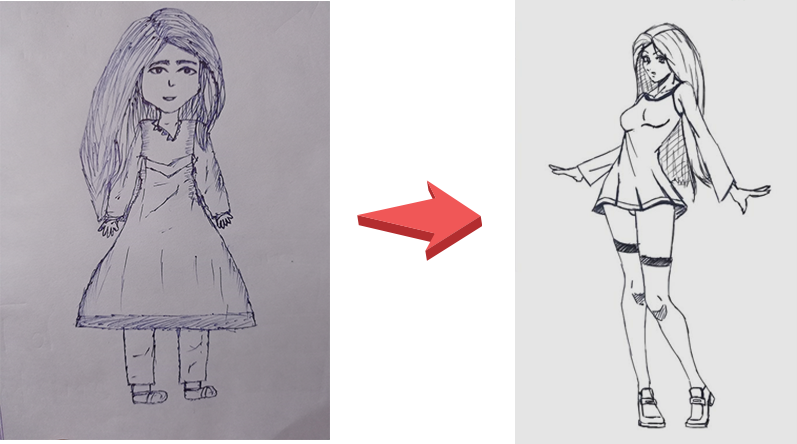
Wait, that question is too easy.
"You just need a bit of talent, a bit of patience, a bit of discipline and tons of practice. EASY!"
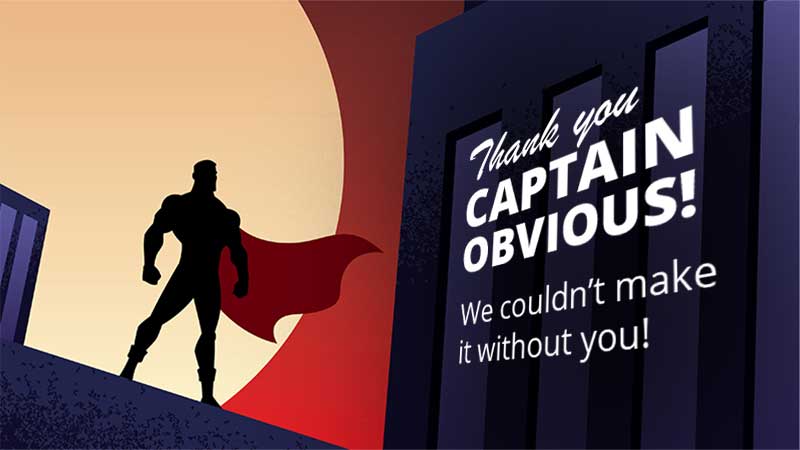
OK. Let me rephrase that into a harder question to answer:

Our definition of a True Beginner is someone with:
- No talent
- No skills
- No patience
- No discipline
- No time to waste
That is our definition of a TRUE BEGINNER. Someone who didn’t have the “calling” or the “fire” to become a great artist.
Someone who takes a pencil and feels weird about it.
Someone who when they try to draw, inside they feel they have no idea what they are doing.
So, can a true beginner become really, REALLY good at drawing?
And most importantly, can this happen to you?
My answer is, YES!
(And I am backing this up with scientific research -- check the FAQ at the bottom)
The reason why you are probably skeptic by now, is because you are most likely…

READ CAREFULLY because knowing where you are at in these 5 phases, can help you understand how good you can become.

“I think I can do this!”
This is when you start giving it a try.
You look at other people’s art and that really makes you happy and excited, it makes you wish you could draw like that too.
Then, you decide to give it a try!
Maybe this happened recently, but I am willing to bet that most likely this happened years ago, and you are further down the path of disillusionment.


“It sucks when my drawings are not like what I see in my mind.”
This is when we start to realize that this might take way longer than we thought, but we are still maybe a bit optimistic.
Maybe if I really put myself into it, I can make it happen”“
This is what happened to Waylon and me years ago.
When our drawings didn’t reach the standards of what we were imagining.
We were able to imagine really cool characters with interesting backstories, but we were never good enough to make them come true.
Chances are, you are probably feeling the same.
We take a piece of paper, try putting some doodles in it, and then we stop because when we draw, we don’t love what we see, and the more we try, the more we feel we are not getting anywhere.
It sucks when the idea we have in our heads is better than what we are able to do.
It’s not that you lack imagination or inspiration, it’s just that, it is INSANE to continue pursuing a lost cause!
What if it doesn’t pay off in the end? What if you put all this time and energy only to get nothing to show for it?

But we don’t lose hope yet, we haven’t tried everything, we can still make it happen.
We push forward.

“I tried learning from books, courses and tutorials, but it didn’t work.”
This probably has already happened to you, from the email responses I got, this is where I believe most students fall into.
We got many stories telling us how they tried learning from books, courses and tutorials, but still they felt they were not getting anywhere.
Some tried learning anatomy but it was so overwhelming that they felt it was just not for them.
In my case, I was just not satisfied with my work at all.
I would try so hard to get better and better, but what I was doing was not working (this is when I decided to give up at my 17).
Sometimes we just have no idea how do we actually improve!
Sure, we see the teacher doing a beautiful demonstration, but when we try it, it looks nothing like what the instructor did, and we have no idea how to do it properly!
And worse than that, we see everybody else getting it right, except us!
It feels like we are falling behind and the more the course progresses, the farther away we feel from getting it right.
And when you contact the instructor, you usually get answers along the lines of: you just need to be patient, it will come to you, just practice.”“
I hate that. I hate it! Writing that just made me cringe because of some past memories.

Practice is what we’ve been doing! Practice and more practice!
So much so, that it feels like we are doing the same mistake over and over; like we don’t know if what we are doing is making us better or not.

But all hope is not lost yet:
If books, courses and tutorials failed, then maybe I just need to push harder!”“
And we keep pushing, not super optimistic as in the beginning, but we keep at it.

“I don’t think I’ll ever be good enough, no matter how hard I try.”
So after practicing and practicing, and not getting much help from some teachers, we end up giving up feeling frustrated thinking that maybe no matter how hard we try, we will never be good enough.
Now, sometimes we do notice improvements. YES!
But the sad part is that those improvements are just not significant enough for us to continue pushing forward.
Because hey! If we are not getting any better, why keep trying, right?

So, the best idea appears to be to convince ourselves that we will never be good enough.
And then, after all this effort and energy, we arrive at the last phase in the path of disillusionment.

“It’s useless to keep trying, this is a waste of time.”
If you are at this level when you convinced yourself that you can’t improve, I believe your skepticism is 100% justified.
I know because I’ve been there.
This happened to me, and it happened to Waylon too, remember?
No matter how hard we tried, it was just not working, so why keep trying?

Well, after explaining the 5 phases of the path of disillusionment, I want to get back to the question I started with.

So, after all of this,
So, what do you think?
If you are in phase 1 or 2, then your answer is: “Yes! Of course a true beginner can become good at drawing!”
But if you are past phase 3, then you have your doubts.
Well, you already know my answer.
Even after having experienced the 5 phases I think it’s not only possible, but it’s also real because I’ve seen it many times, and I want to see it happening with you.
So, my question is not, can a TRUE BEGINNER become good?”, the actual SUPER HARD QUESTION is…
Maybe this can be a surprise for you, but you already know the answer.
You just keep applying the 3 Punch Combo.


Understand that you go through 3 stages.
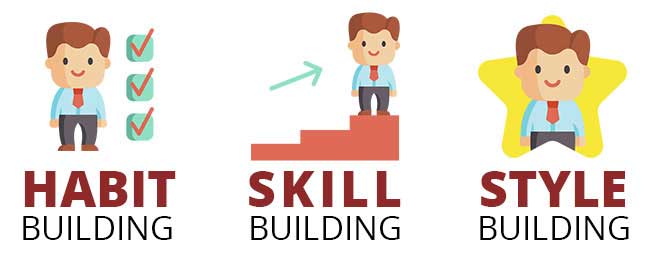
If you are a TRUE BEGINNER, then you start with 2 minutes of drawing a day.
(Scientific research by behavioral scientists back this up* -- small changes lead to big results, and your brain can always improve.)

Focus on mastering the elements you want to be drawing.
Think of drawing as a buffet, just put into your plate the things you like the most, and you will enjoy drawing more and more.
If you want to paint backgrounds, master perspectives.
If you want to design characters, master anatotomy.
If you want to draw creatures, master animal anatomy.

A mentor will help you make sure you are always on the right path and will save you from WASTING YOUR TIME on things that don’t work.
Can you combine all 3 punches into 1 single program?
Yes.
We actually made it so…
Introducing
Get 15 years of drawing experience in 2 weeks.
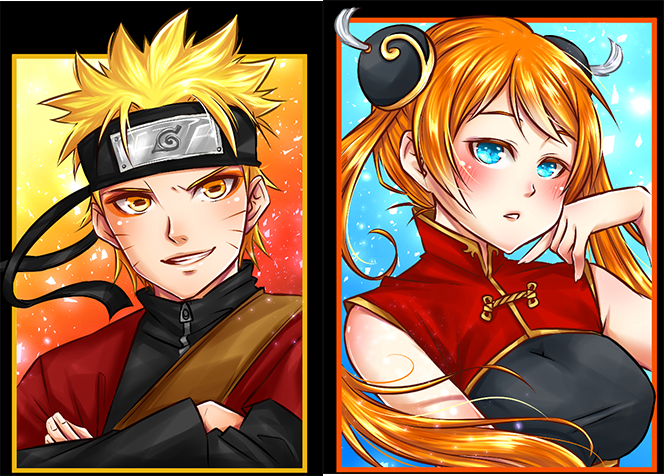
Yukio Onishi is a self-taught professional Illustrator from Japan with 15 years of experience in drawing.
He has been working professionally for 6 years and has had published work for the last 4 years.
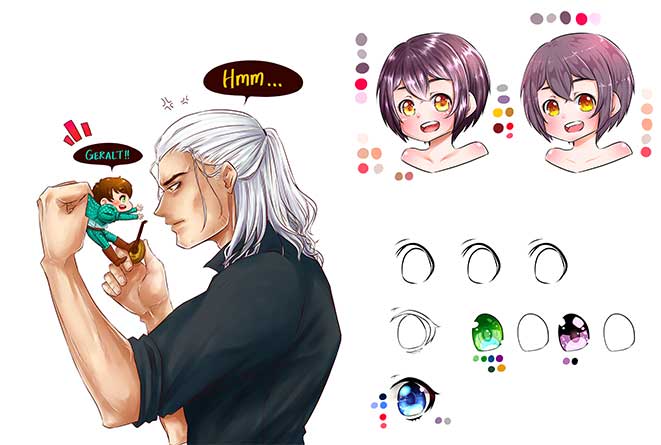
Because he was self-taugh, he understands the frustration of not knowing exactly what you are doing when you are trying your best, and not getting the results you want.
Even after some setbacks, he was able to become a professional illustrator.
His published work includes:
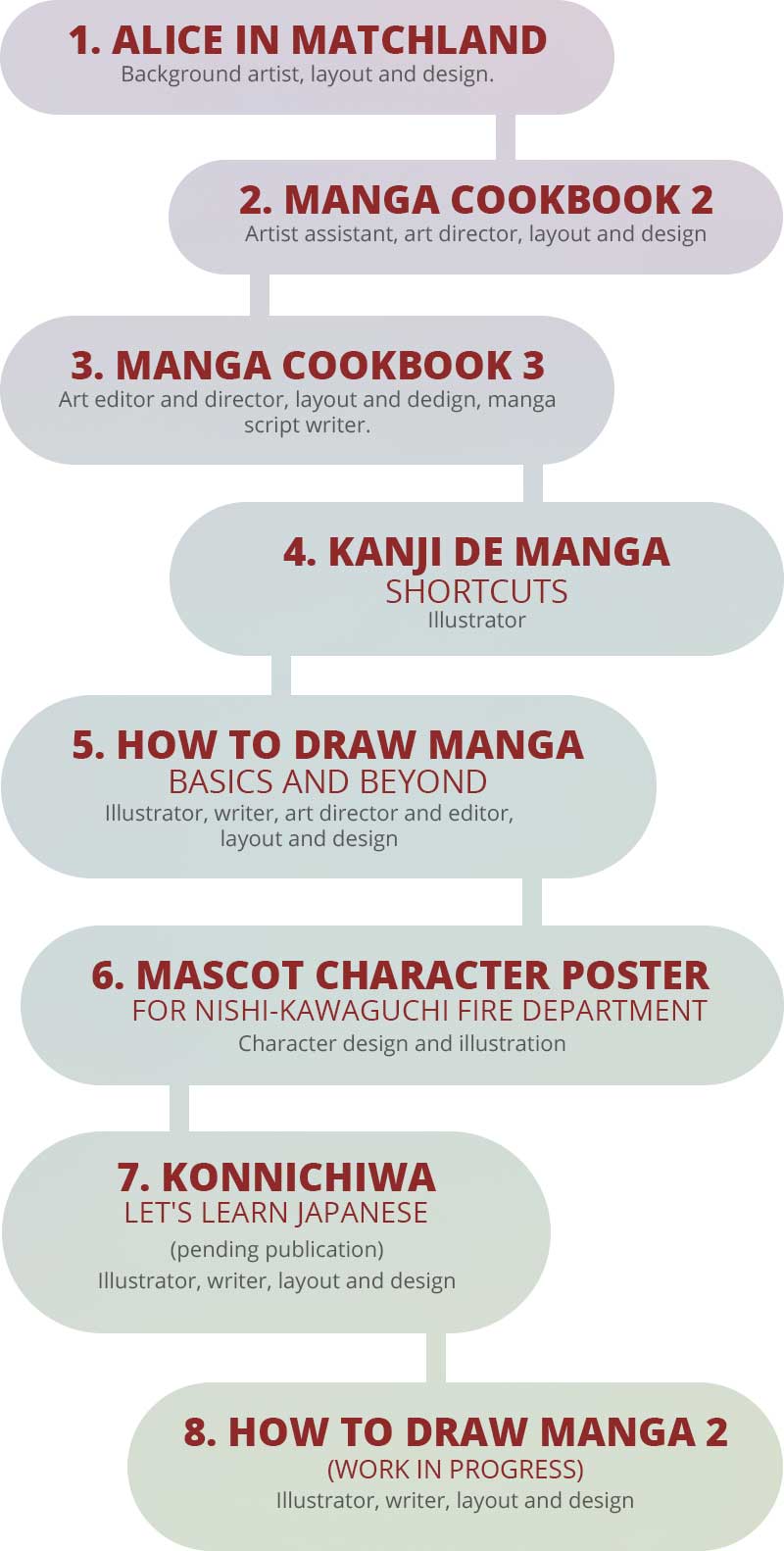

- 2-Week Bootcamp Intensive
- Total of 16 Hours of Classes with time for students to practice.
- Lifetime Access Course so you can take it at your own pace.
- Access to the Yukio Onishi's Discord Server to post Drawing Assignments.
- Discussion, Support and Drawing reviews through the discord server.
- 1 year of 1on1 Feedback from me or our Certified Instructors on assignments delivered in the Discord Server.
"What if I am a true beginner?"
Again, we define a true beginner as someone with:
- No talent
- No skills
- No patience
- No discipline
- No time to waste
Well, again, focus on Punch number 1. Go little by little.
You don’t need talent, skills, patience, discipline or time to put 2 little minutes of drawing a day.
HARD FACT:
You have 16 waking hours every day (assuming you sleep 8 of the 24 hrs).
That’s 960 minutes.
If you spend 2 minutes drawing every day, you still have
958 minutes every day!
YOU HAVE PLENTY OF TIME FOR EVERYTHING ELSE!!
Remember, if you are a TRUE BEGINNER, you need to focus on building the habit first, skill building will come later (3-5 weeks later).
Think of it as a journey in 3 stages:
- Habit Building (3-5 weeks)
- Skill Building (1-2 years)
- Style Building (the most fun!)
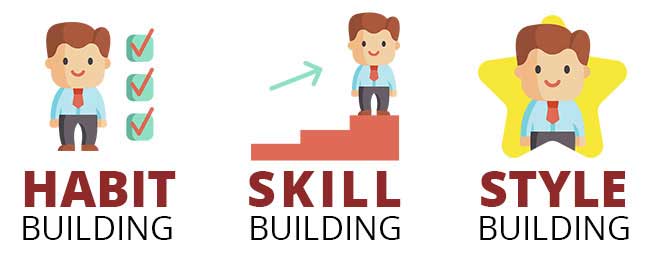
Here is what is most likely going to happen. On week 3, you will expand your practice to 7-10 minutes, and you won’t even feel it.
Then you will expand it to around 30 mins, and that is when you will be up for the races.
30 mins a day doing specific assignments will help you get enough progress to convince yourself that you can do this – This will be the skill building stage.
Once you are a believer, you will start putting up to an hour a day without much effort. You will do it simply because you enjoy it.
"What if I don’t have time to draw?"
If you don’t have time to draw is only because you haven’t tried my Drawing while eating”“ principle (especially useful for busy people like you and me).
My big discovery was when I realized that when I was eating, I would have to wait around 20 seconds while chewing food, with my hands doing nothing, just waiting for me to swallow and put in the next bite.
I then experimented with little 20 second intervals, bringing a sheet of paper, and drawing while I was chewing food.
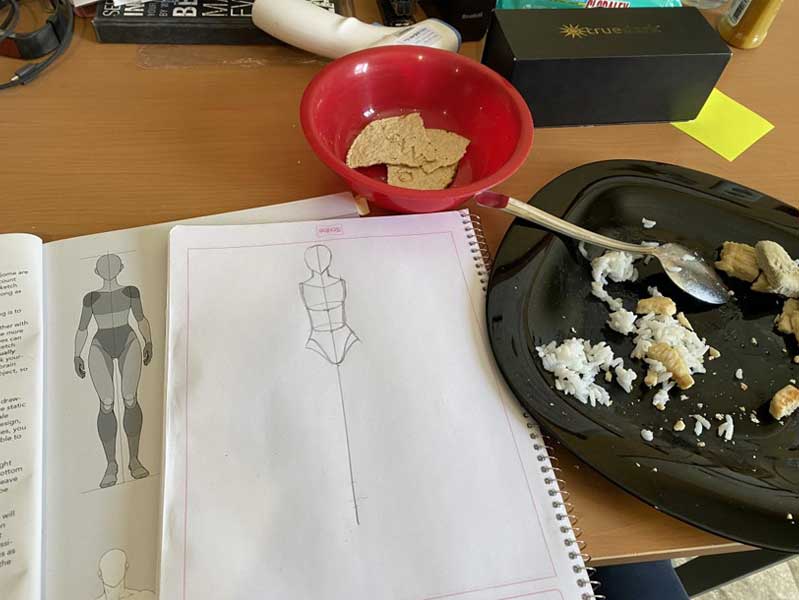
That’s when I became a believer.
Now, because I need to keep eating everyday to stay alive, and also because of my new belief of “eating without drawing is boring”, even in my busiest days, I practice 30 to 60 mins a day without much effort (That’s a fast breakfast, fast lunch and fast dinner).
Even with family, I can be chewing, drawing and talking with my brother (or rather listening, it’s impolite to speak with your mouth full).
Drawing while eating has made my life way more enjoyable, and best of all, ANYBODY CAN DO THIS!
TRY IT!
"How does this bootcamp work?"
Bootcamp days
This program is the recordings of a bootcamp we had live on October 2021.
You can go through the recordings at your own time. The best approach would be to take it 1 day at a time.
IMPORTANT: Make no mistake, this bootcamp is still alive. Students, instructors and even Yukio Onishi Sensei are still posting on the Discord group to this day.
LIVE DISCORD SESSIONS
From time to time, you might catch Yukio Onishi sensei live on the discord server, and when you find her, you can ask questions and she can answer with personalized tutorials for you in a live class.
Here is an example of a recent tutorial Sensei did for a student:
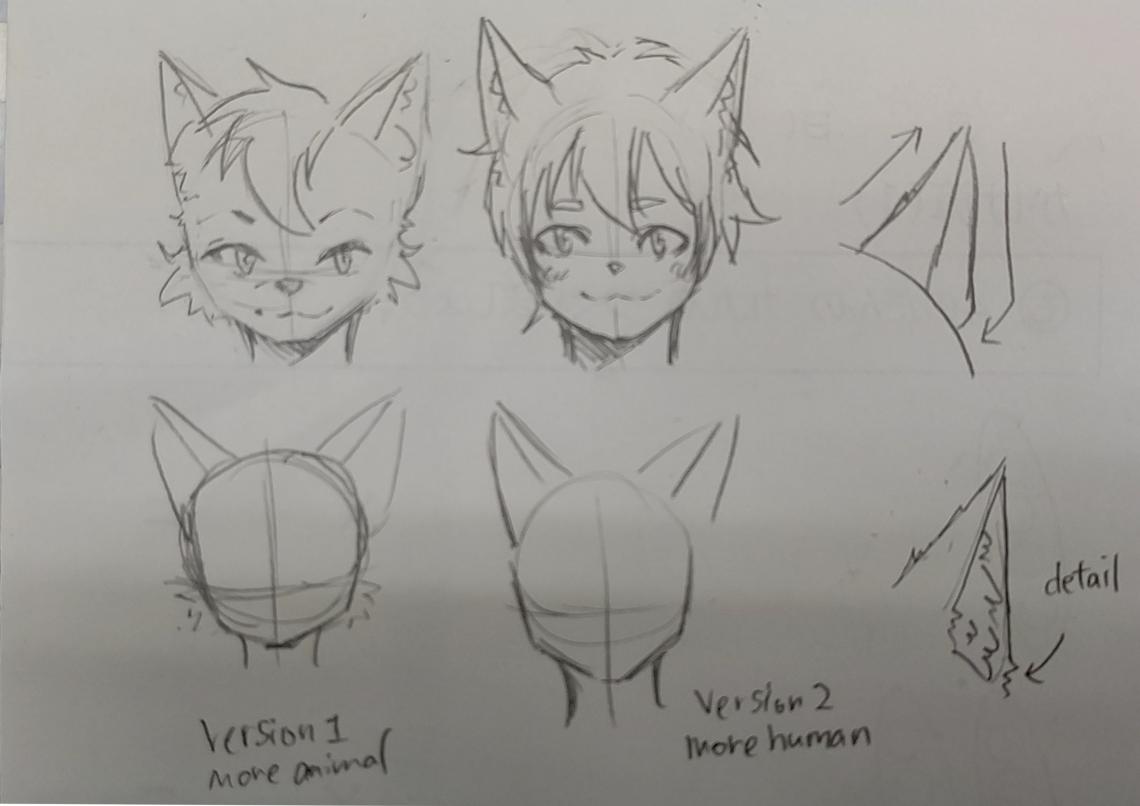
The class covers anime drawing, but Lone wanted to know how to draw animal characters in humanoid form (like the RPG Game Solatorobo: Red The Hunter); so Onishi Sensei did this tutorial just for him during a live discord session.
The cool thing about those live sessions is that you can just join Onishi Sensei and watch him work on a professional Manga that will be published later in Japan.
PRE-RECORDED BOOTCAMP
All sessions were recorded, edited and uploaded to our school in clips for your convenience.

Sessions lasted for 2 hrs, but those long sessions were splited into small clips so you can check them topic by topic, instead of having to sit down for 2 hrs (perfecto for those who can dedicate around 15 mins a day to learn).
We did this so you can go through the program at your own pace.
All assignments can be delivered at any time on the discord server and will be reviewed by certified instructors to guide you along the way.
That is why we added an entire year of feedback through our discord server.
Can you see how this is becoming more and more possible?
Enroll today, and I will see you in the bootcamp!
ENROLL NOW"What will I learn?"
You can take the training at your own rhythm, but if you want to follow up as we did live in this intensive bootcamp, you will learn a ton in only 2 weeks.
Here is the breakdown of each day:
Curriculum:
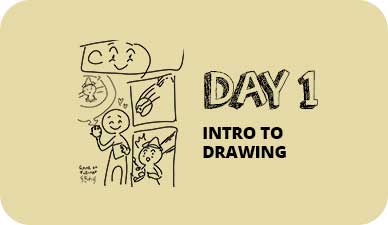
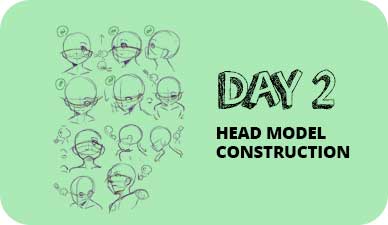
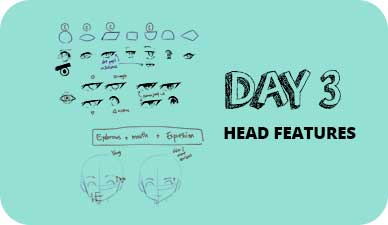
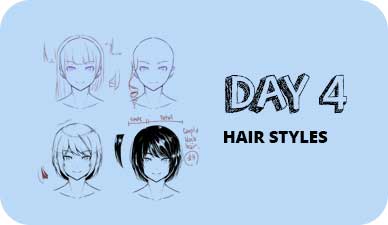
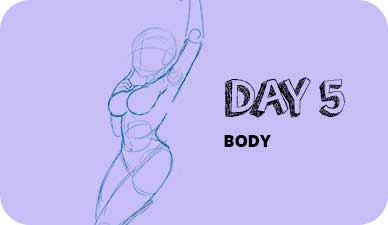
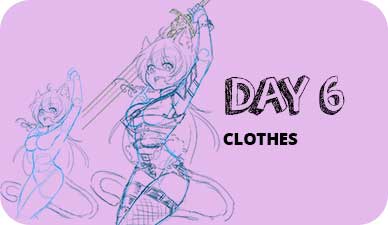
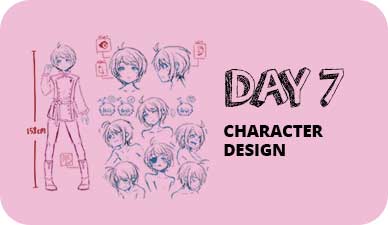
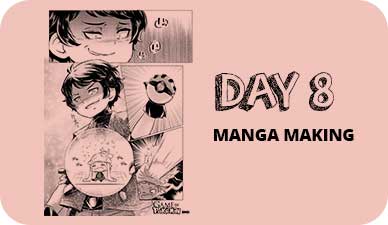

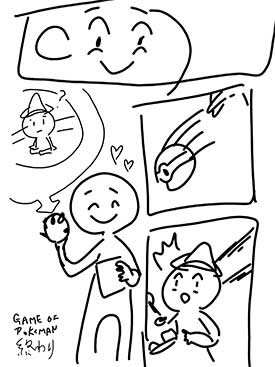
Basic tools for class (Yukio’s personal tools and student’s tools)
Drawing a quick head together to understand students’ style and level
Discussion of what we did good
Discussion of what can improve
Discussion of goals
How to review your own illustrations
Sketching your own character applying new tips learned
Inking your sketch
Assignment:
Draw head again but using the discussion points to improve
Draw a sketch / outline for future comparison

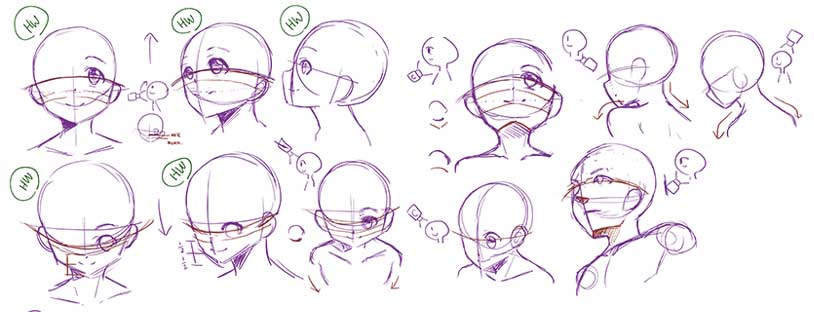
Basic measurements and placements on front view
Drawing 3D head model before placing features
Construction, shapes, age and angles
Discussion and critique of homework illustrations
Front and 3/4 head turns
Measurements
Guidelines
Changing shapes of face to change the age
Sketch a few 3D models with different shapes and sices
Side and 3/4 back turn
Measurements
Guidelines
Changing shapes of face to change the age
High Angle – guidelines and important points
Low Angle – guidelines and important points
Assignment:
Draw character from day 1 at full body (body and clothes on different layers)

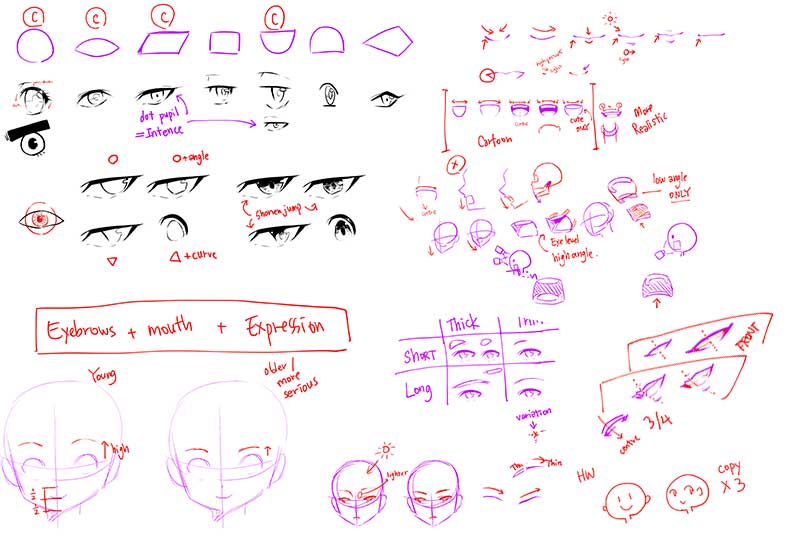
Eyes (shapes, details, placements, angles)
Nose (shapes, details, placements, angles)
Mouth (shapes, details, placements, angles)
Expression
Discussion and critique of homework illustration
Eyes and Eyebrows
Eyes shape
Iris shapes and details
Lashes and lids
Eyes type for different characters
Eyes at different profiles and angles
Drawing time
Sketch a few profiles and draw on eyes (males and females)
Nose and Mouth
Measurements on head and placements
Various ways to draw noses
Shapes and angles
Various ways to draw noses
Shapes, angles and details
Drawing time
Draw noses and mouths on to character’s faces
Basic Expressions
Happy
Sad
Angry
Surprised or confused
Mixed expressions
Discussion time
Assignment
Draw the head of your character from Day 1 with different expressions

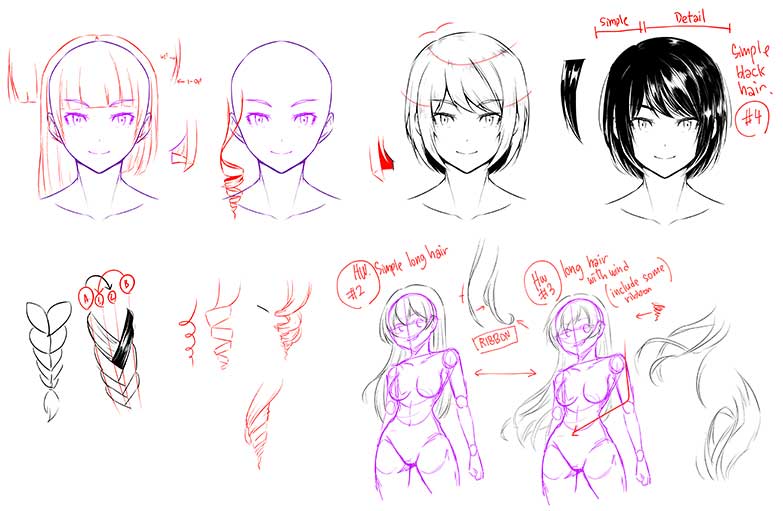
Critique homework illustrations
From teacher
From other students
Redraw some illustrations.
Line quality
How to get sharp lines, neatness, planning and movement technique
Sketch a head (front), basic hairstyle.
Simple style vs complex style
Girl’s and boy’s hair (short, long, bangs, tips)
Basic hair texture
Wave and curls
Flipped back
Drawing time
Draw a quick head together to understand students’ style and level
Tips and questions time
How to check if own illustration
Drawing time
Adding affects to hair (wind and expressions)
Short / long hair
Wet hair
Extra details
Drawing time
On finished hair drawings, hair shading black and white
Simple blocks
Complex shading
On finished hair drawings, hair shading colour
Assignment
Redraw character again and shade hair (head only OK)
One in color
One black and white (grayscale)

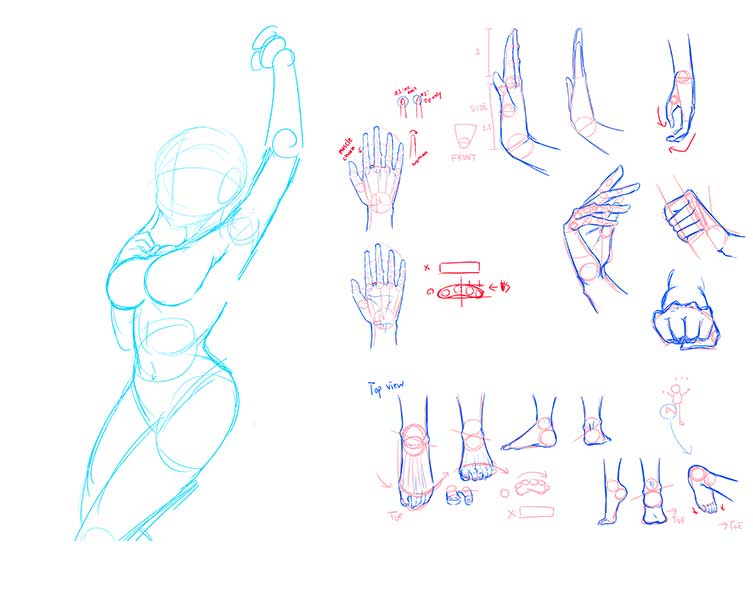
Overview
Constructing basic 3D model
Adjusting movements
Adding on features
Using CLIP Studio 3D model (changing sizes and poses)
Details
Critique homework illustrations
From teacher
From other students
Redraw some illustrations.
Designing 3D model of Basic Male
How to modify simple 3D model to fit different body types
Drawing male body
Upper torso
Lower torso
Details (arm muscle, abs, etc.), line work
Drawing time
Draw a male body with simple pose
Work some details at the side
Tips and questions time
How to check if own illustration
Designing 3D model of Basic Female
How to modify simple 3D model to fit different body types
Drawing female body
Upper torso
Lower torso
Details (plumpness, breast, etc.), line work
Drawing time
Using images to make 3D models
Using Clip Studio 3D model for your own character poses
Assignment
Redraw you character using today’s lesson, adding details and adding body shape

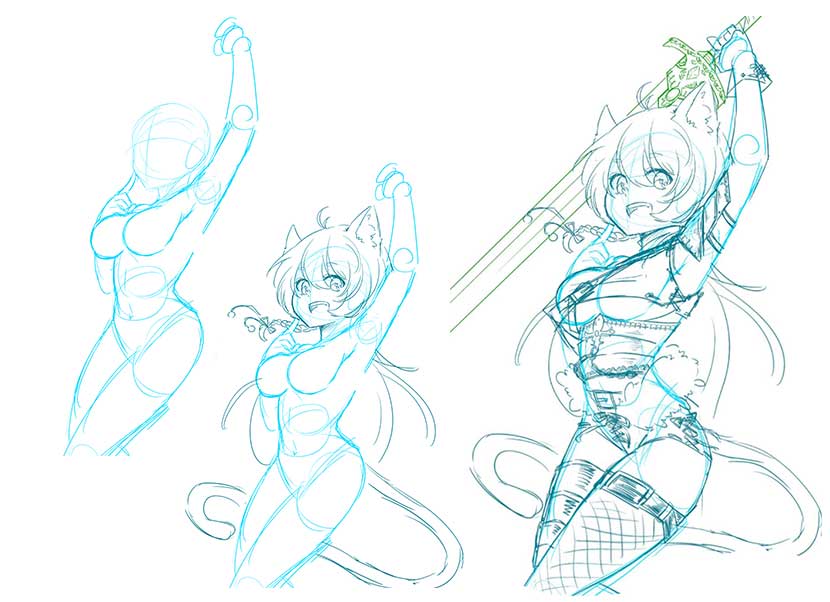
Overview
Inspiration and mood board
Fabric (simple, tight, loose, leather, etc.)
Material and décor (bows, ruffles, metallic items, designs, etc)
Effect on clothes (wind, burns, rips, etc.)
Critique homework illustrations
From teacher
From other students
Redraw some illustrations.
Mood board and fabric
How to get inspiration from existing clothes
Sample of original characters
Fabric
Simple clothes (shirts, loose clothes, tight, rubber, etc)
Texture (normal, special texture – lace, stocking shine, etc.)
Drawing time
On original character nude body, draw some clothes
Tips and questions time
How to check if own illustration
Materials and decor
Girly decors (Bows, ruffle, lace, etc.)
Male decors (Belts, chokers, chain links)
Drawing time
Try drawing some items
Effect on clothes
Wind, burns, rips
Assignment
Redraw character in a few different clothes designs
Think about a character they want to make for Day 7

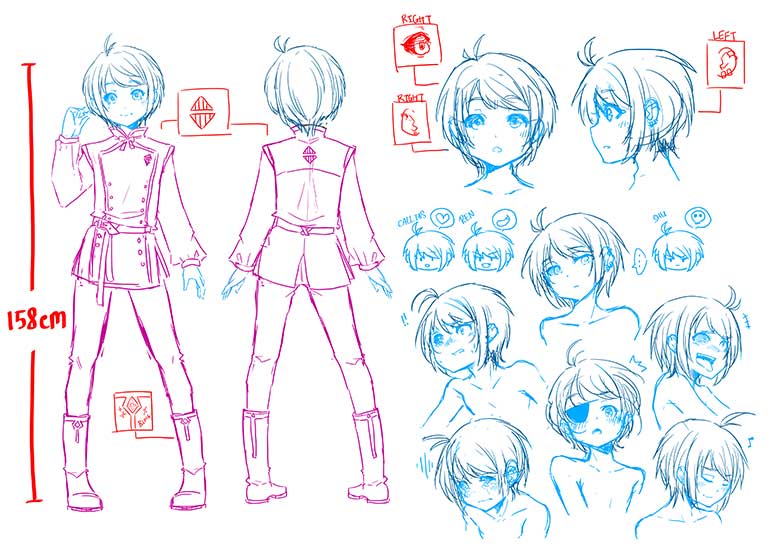
Overview
Character design (making character sheets)
Translating coloured characters onto B/W manga
Using screentones
How to introduce character and world when starting a manga
Critique homework illustrations
From teacher
From other students
Redraw some illustrations.
Making character sheets
Character sheet
Basic information
Likes/dislikes, personalities, motivation, abilities, details, etc.
Key expressions and items
Making both black and white and coloured version
Importance of both versions
Using screentones
When and where to use screen tone on character sheets
Basics tools
Drawing time
Let’s sketch out our character sheet together
Discussion time
Share a little about their character. Students are welcome to ask questions about why a character has a certain item or are a certain way. This will help the character owner develop their characters.
Tips and questions time
How to check if own illustration
Size and layouts
Page size (margins, frames, limits, etc)
Panelling
Thickness and size
How to use panelling to indicate camera movements
Text bubble (main text and side text)
Drawing time
Try making own layout of a manga page
Photos to screentones
Changing photo to screentones
Direct
Drawing with photos
Assignment
Redraw the character sheet with details

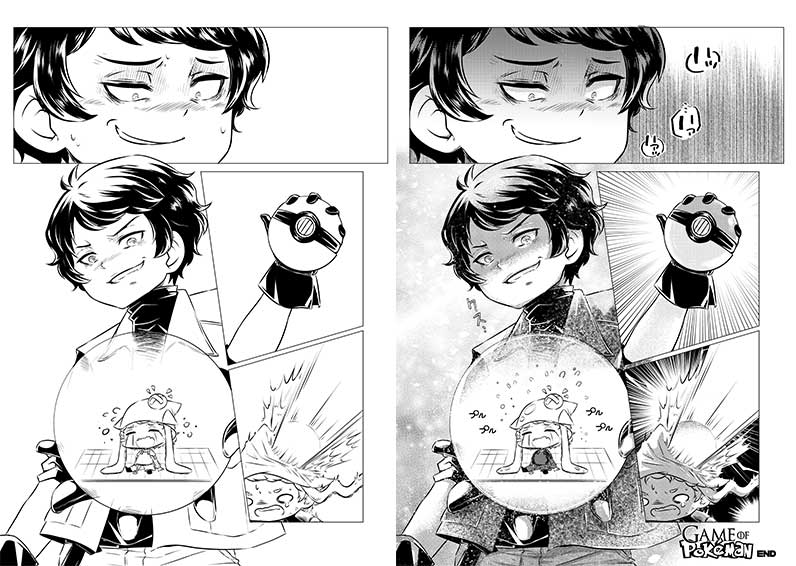
Overview
How to introduce character and world to readers
Getting started (planning)
End goal
Discussion time
Critique homework illustrations
From teacher
From other students
Redraw some illustrations.
Introducing a character in a manga
Panelling
Essential scenes to introduce character to establish world.
Pre-title pages and first title page (sample of existing manga)
Panel size
Introducing a scene
Locations, atmosphere, and main character
Drawing time
Create some panels and text planning
Discussion time
Students talk about how their story is starting, where and when.
Tips and questions time
How to check if own illustration
Rough drafting
Very rough draft (importance of planning a head)
Sketching
Inking art work in different styles (usual manga-ka work environment and how to do it by yourself)
Drawing time
Students make rough drafts together
Discussion time
Students can talk about what they find difficult or ask other students questions about what is in the panel
Inking
Let’s ink the first panel together
Final thoughs
"What if this program doesn’t work for me?
What if I don’t improve my drawing?"
This 3-stage system works because we have been working hard on it and has been battle-tested for 3 years (since 2018)
- Habit Building
- Skill Building
- Style Building
If for any reason you don’t see any results after going through the program, doing the exercises and getting guidance from our certified instructors, we will give you your money back and you get to keep the course for free.
We are the only school to back up our claims with a life-time guarantee.

"What if I don’t like the course?"
SATISFACTION
GUARANTEED

We offer a 30-day satisfaction money back guarantee, no questions asked.
If for any reason, you decide you didn't like the course, we will give you a full refund, no questions asked.
So… Who would you rather be?
1 year from now, some students are going to start drawing like they’ve never done before, their family and friends are going to start asking them to do drawings for them, and they will be enjoying the power of putting on paper whatever they can imagine.
And some other students are going to keep feeling lost, not knowing what they are doing.
Which one do you want to be?
Hey, if the year is going to happen anyway, why not give it a try and become the one who gets the improvement.
(And also, remember we are the only school to back up our claims with a life-time guarantee)
ENROLL NOWfrequently asked questions
The live sessions start on Monday, July 26 at 5:00 PM MST. You can check the times here.
Testimonials, we have plenty from students.
You can check Waylon's Story here.
But if you are skeptic of testimonials and you prefer scientific studies, you can check out these books: Tiny Habits by BG Fogg, Atomic Habits by James Clear, Nudging by Richard Thaler, The Brain that Changes itself by Norman Doidge, Change your Brain Change You Life by Daniel Amen.
These books have tons of research on brain science and behavioral design.
Yes. Because we are the only school so far that is taking into account BEHAVIORAL DESIGN.
We know from experience and from scientific research that MORE information doesn't help beginners, what they need is to go through the 3 phases we designed: Habit Building, Skill Building and Style Building.
If you are a true beginner, you start on Habit Building applying the principles from BJ Fogg's Tiny Habits. You start drawing 2 minutes a day.
You don’t need talent, skills, patience, discipline or time to put 2 little minutes of drawing a day.
Starting with 2 minutes a day, I went from being fat, to being fit. Learn more about it here where I talk about how Waylon came back stronger than ever, and how I changed my life with a tiny 2-minute habit..
If for any reason you don't understand some concepts or techniques taught in this bootcamp, you can reach out for support or to our certified instructors 1on1 to get help.
Falling behind is completely normal.
Yukio's teaching will be fast paced, but you will be able to come back to the material at your own pace, and with the support of our team and certified instructors, we guarantee you will eventually understand and master each concept.
If you don’t have time to draw is only because you haven’t tried my “Drawing while eating” principle (especially useful for busy people like you and me).
My big discovery was when I realized that when I was eating, I would have to wait around 20 seconds while chewing food, with my hands doing nothing, just waiting for me to swallow and put in the next bite.
I then experimented with little 20 second intervals, bringing a sheet of paper, and drawing while I was chewing food.
That’s when I became a believer.
Now, because I need to keep eating everyday to stay alive, and also because of my new belief of “eating without drawing is boring”, even in my busiest days, I practice 30 to 60 mins a day without much effort (That’s a fast breakfast, fast lunch and fast dinner).
Even with family, I can be chewing, drawing and talking with my brother (or rather listening, it’s impolite to speak with your mouth full).
Drawing while eating has made my life way more enjoyable, and best of all, ANYBODY CAN DO THIS!
TRY IT!
All sessions will be recorded and edited to be uploaded to our school in clips for your convenience.
Sessions will last for 2 hrs, but video clips will be from 5 to 10 mins.
That way you can go through the program at your own pace.
All assignments can be delivered at any time on the discord server and will be reviewed by certified instructors to guide you along the way.
That is why we added an entire year of 1on1 feedback through our discord server.
This 3-stage system works because we have been working hard on it and has been battle-tested for 3 years (since 2018): Habit Building, Skill Building, Style Building.
If for any reason you don’t see any results after going through the program, doing the exercises and getting guidance from our certified instructors, we will give you your money back and you get to keep the course for free.
We are the only school to back up our claims with a life-time guarantee.
We offer a 30-day satisfaction money back guarantee, no questions asked.
If you are unsatisfied with the program, we will give you a full money refund.
You can use either one!
The principles you will learn here can be applied with pencil and paper, or with a drawing tablet.
Yukio uses Clip Studio Paint, most of the techniques you will learn can be applied in any software or with pencil and paper, only the 3D Model lessons will be exclusive to Clip Studio Paint.
No deadline. But just take into accout that you will have 1 year of 1on1 feedback from our certified instructors to guide you and help you improve faster.
Our recommendation is to plan ahead and make sure you can finish the whole bootcamp in less than 1 year.
How does lifetime access sound? After enrolling, you have unlimited access to this course for as long as you like - across any and all devices you own.
No.
This is course is offered exclusively on 2DAnimation101.
Absolutely.
After the live sessions, once we upload the edited clips to our school, you will be able to download all lessons for offline access.
DAM and DPM students will get free access to the recordings as part of their drawing training. However, it will be only the recordings.
To attend the live sessions and/or get 1 year of 1on1 feedback on the assignments, students will have to enroll in this training here.
ENROLL NOW

- 2-Week Bootcamp Intensive.
- Total of 16 Hours of Classes with time for students to practice.
- Lifetime Access to the Recordings (edited in short clips for your convenience).
- Access to a Discord Server to post Drawing Assignments.
- Discussion, Support and Drawing Reviews through the discord server.
- 1 year of 1on1 Feedback from me or our Certified Instructors on assignments delivered in the Discord Server.
Perfect for students who won’t be able to attend live or who want to take this bootcamp at their own pace.

You will love it, or your money back.
3 MONTHLY PAYMENTS
$79 USD
Enroll Now
SINGLE PAYMENT
Save $40
$197 USD
Enroll Now
